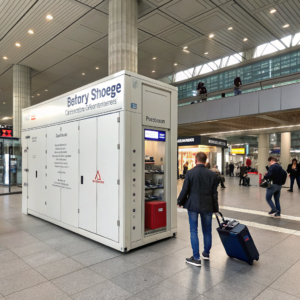What is needed for a hybrid solar system?
•
Are you thinking about switching to solar energy? Hybrid solar systems are gaining popularity but what exactly do you need to get started?
A hybrid solar system requires solar panels, a hybrid inverter, battery storage, and the necessary electrical components to integrate with the grid. These systems store excess energy for use during low production periods, providing both reliability and flexibility.
Thinking about the right system can make a huge difference. Let’s dive deep into whether a hybrid or other systems are better for you.
Which is better, hybrid or on-grid solar system?
Deciding between a hybrid and an on-grid solar system can be perplexing. Each type offers distinct advantages.
Hybrid systems store energy for use during grid outages, offering more backup capabilities than on-grid systems, which rely fully on grid connection. A hybrid system provides energy independence, reducing reliance on external power sources.
!
Understanding your specific energy needs, budget, and location are pivotal to making an informed decision. On-grid systems typically incur lower installation costs and provide financial incentives such as net metering, which allows homeowners to earn credits for any excess energy generated and fed back into the grid. Conversely, hybrid systems allow for energy storage solutions that store excess energy, enhancing sustainability and reliability, especially during power outages. A hybrid system also reduces electricity bills significantly, as stored energy can be used during peak pricing periods. Therefore, choosing the most suitable system depends on understanding and aligning your unique circumstances and priorities with the qualities each system provides.
Which is better, grid tie or hybrid solar system?
Facing dilemmas like choosing between a grid-tie system and a hybrid system can be challenging, especially when considering your unique energy goals.
Grid-tie systems are efficient and rely on the grid for excess energy storage. Hybrid systems, however, integrate battery storage, offering the added advantage of energy independence and backup power during outages.
In essence, factors such as location, financial capacity, and energy usage patterns heavily influence the decision between grid tie and hybrid solar systems. Grid-tie systems offer straightforward integration with existing power grids, which facilitates cost savings through net metering and lower installation expenses. On the other hand, hybrid systems typically demand higher investments upfront due to battery costs but provide greater energy self-sufficiency and resilience during grid disturbances. By understanding these differences, individuals can make informed decisions that best match their energy needs and financial objectives.
How do you size a hybrid solar system?
Determining the appropriate size for your solar system is crucial to maximize benefits.
Sizing a hybrid solar system involves analyzing the daily energy needs, peak sunlight hours, and battery storage requirements to ensure an efficient, seamless operation tailored to your lifestyle.
Using past energy bills, list out your total daily electricity consumption to estimate your grid energy offset. Calculate your ideal solar panel wattage needed based on peak sun hours, which typically range from 4 to 5 hours per day in many regions. Incorporate a battery storage solution to handle your energy needs during the night or in low sunlight, typically covering one day’s usage. Note that geographical factors and roof area availability also play vital roles. Engage with solar system professionals to ensure accurate assessments, tailored to your specific environment and energy usage related needs.
Conclusion
Understanding the intricacies of hybrid solar systems ensures you are better positioned to make informed decisions, balancing energy independence with efficiency tailored to your needs.





